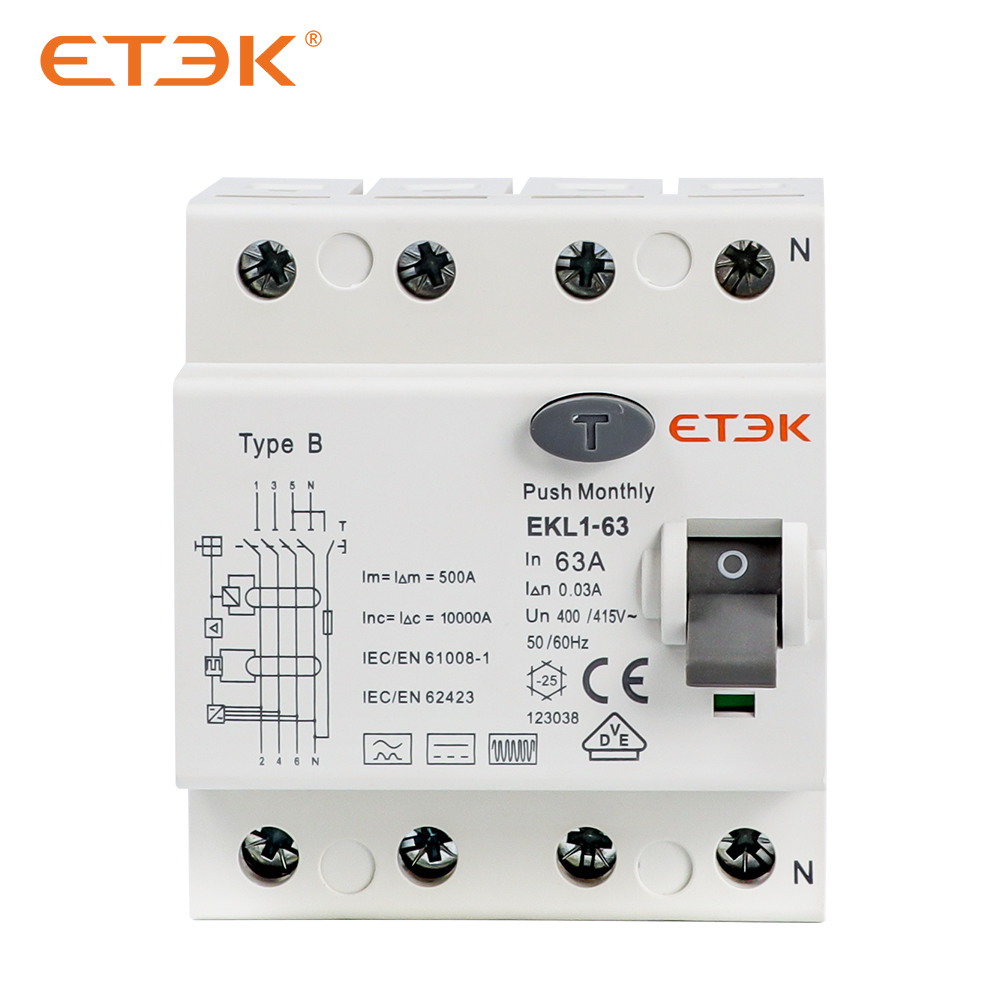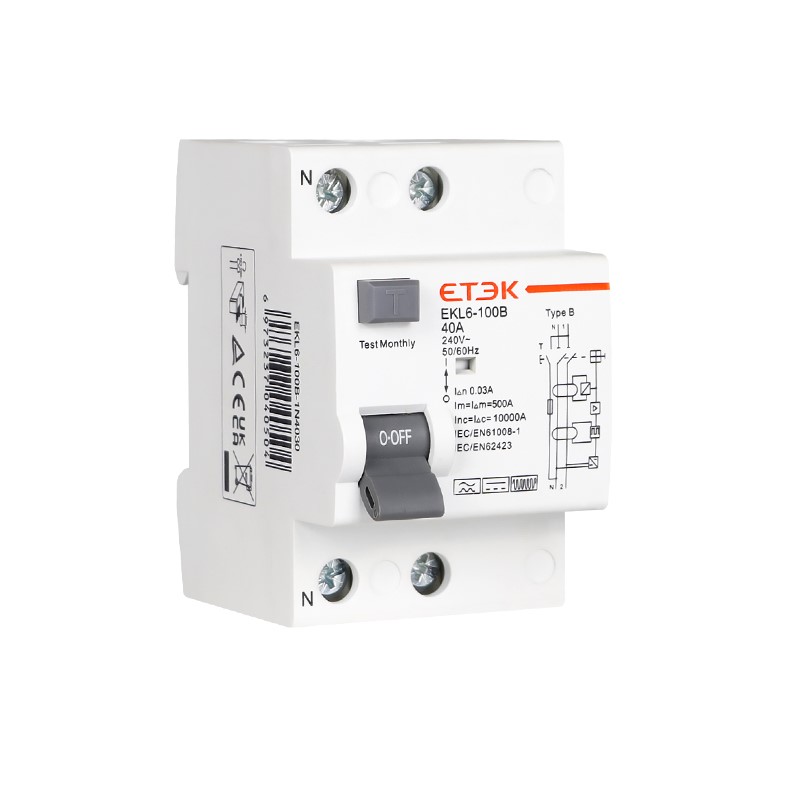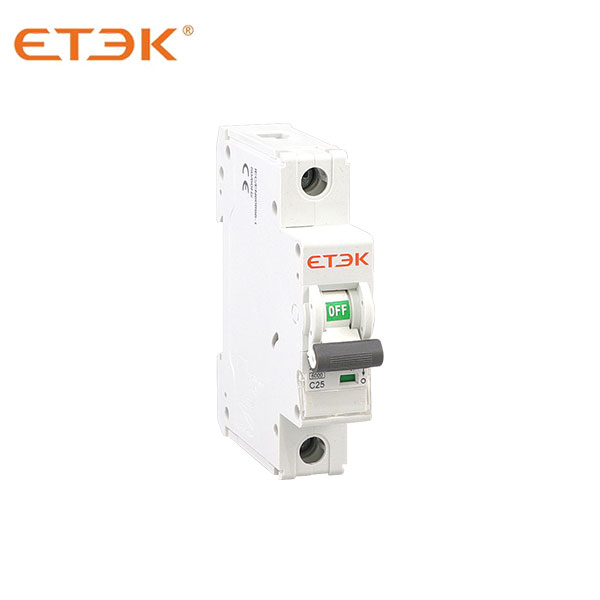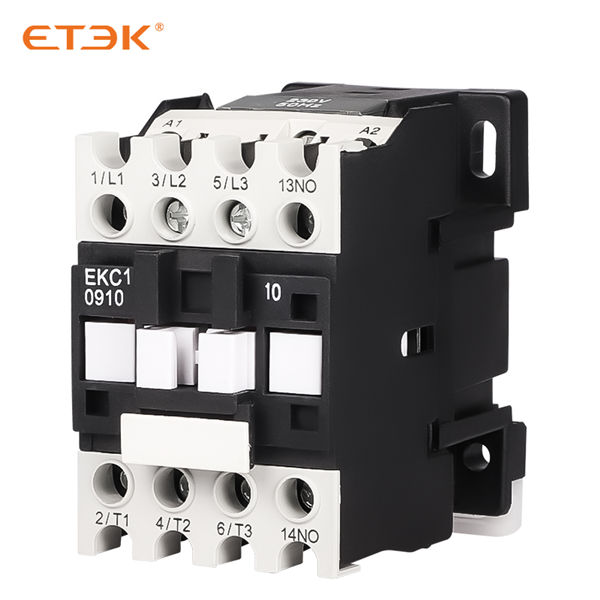Cómo elegir el RCD en diferentes aplicaciones
Durante el uso de aparatos eléctricos, es motivo de gran preocupación cómo garantizar la seguridad del uso de la electricidad, especialmente para evitar que la corriente residual cause daños a la vida y la propiedad.
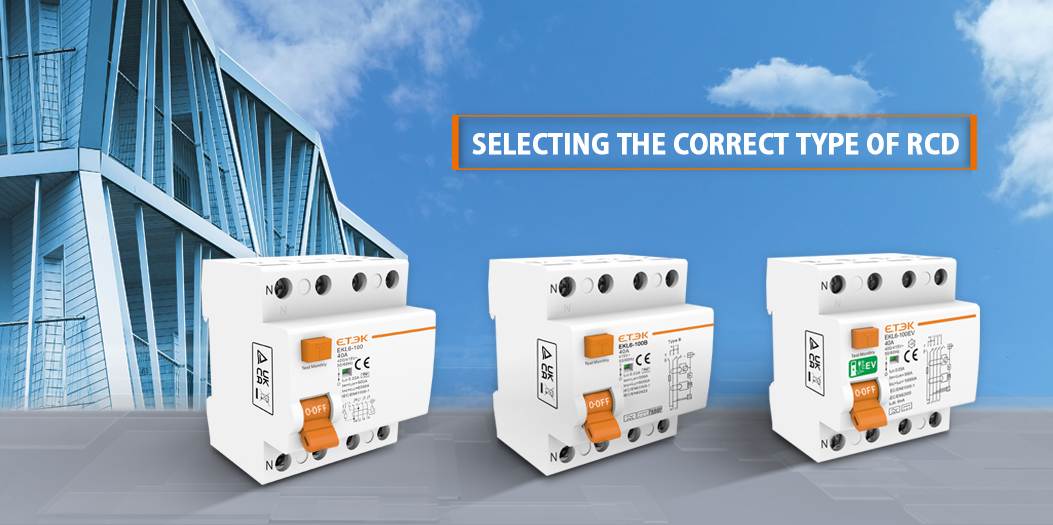
What is residual current (leakage current) ?
Residual current refers to the current in which the vector sum of the currents of each phase (including the neutral line) in the low-voltage distribution line is not zero.
Generally speaking, when an accident occurs on the power consumption side, the current flows from the electrified body through the human body to the earth, so that the current I phase and I phase in the incoming and outgoing lines of the main circuit are not equal in size, and the instantaneous vector composite effective value of the current at this time is called residual Current, commonly known as leakage current, leakage current is a kind of residual current.
The fault residual current may appear in many different forms depending on the load characteristics: residual sinusoidal alternating current, pulsating direct current residual current, multi-frequency composite and smooth direct current residual current.
The main hazards and causes of residual current?
-
Electric shock to the body. When the shell of electrical equipment is charged due to insulation damage, and the worker touches the shell, it will cause personal electric shock accidents.
-
Burning electrical equipment causes a fire. The long-term leakage current, especially the two-phase leakage current passing through the over-resistance grounding, will emit a large amount of heat when passing through the damaged part of the equipment insulation, which will further damage the insulation and even make flammable materials catches fire.
-
Cause a short circuit accident. According to statistics, about 30% of single-phase ground faults develop into short circuits. Thus, causing a larger electrical failure. The long-term leakage current and electric spark further damage the insulation at the leakage point, endangering the insulation between phases and causing a short circuit.
-
Cause electrical fire accidents. When a single-phase grounding of the power grid or a single-phase contact of the equipment occurs, an electric spark will be generated at the grounding point. If the electric spark has enough energy, it may ignite flammable and explosive materials.
How to avoid being affected by residual current in daily life?
The use of residual current protective devices (RCD) is the main means of protecting residual current in daily life. It is an electrical safety device that can quickly disconnect the leakage current grounded circuit, thereby avoiding or reducing the damage caused by electric shock. How to choose and install the residual current protector has become a new topic.
Classification of residual current protectors
Sensitivity
RCD sensitivity is expressed as the rated residual operating current, noted IΔn. Preferred values have been defined by the IEC, thus making it possible to divide RCDs into three groups according to their IΔn value:
-
The leakage circuit breaker of ≤30mA provides protection for direct contact or life injury.
-
The 30~100mA leakage circuit breaker provides protection for electric shock caused by indirect contact.
-
The 100~300mA leakage circuit breaker provides protection for electrical fires and electrical equipment damage caused by grounding faults of electrical lines or electrical equipment.
Types of leakage current detected
IEC Standard 60755 (General requirements for residual current operated protective devices) defines three types of RCD depending on the waveforms and frequency of the fault current.
-
Type AC RCD: RCD developed and designed for sinusoidal leakage current, which ensures tripping for sudden or slowly rising residual sinusoidal alternating current.
-
Type A RCD: An RCD that includes AC-type characteristics and superimposes pulsating DC residual current and pulsating DC residual current ≤ 6mA smooth residual current to ensure tripping.
-
Type B RCD (Type B RCDs detect the sum of the leakage currents): It can reliably protect sinusoidal AC signals, pulsating DC signals and smooth signals, and has higher design requirements than A-type leakage circuit breakers. It ensures tripping under the following conditions:
-
For residual sinusoidal alternating current up to 1 kHz.
-
For residual alternating current superimposed on smooth direct current.
-
For residual pulsating direct current superimposed on smooth direct current.
-
Residual pulsating rectified direct current generated by two or more phases.
-
For residual smooth direct current, whether applied suddenly or increased slowly, regardless of polarity.
What is the influence of DC residual current on RCD?
Some loads (or power supplies) may generate DC leakage currents in normal operation, and when the equipment generates DC in its construction, it connects to the rest of the electrical installation. DC can saturate the core and effectively blind or lock the RCD. This is called "blinding" and makes them insensitive to AC faults on the circuit they are protecting, so they will not be able to ensure their protective function, resulting in a dangerous situation.
Which devices have DC residual current?
Washing machines, coffee makers, boilers, LED lighting, dishwashers, tumble dryers, refrigerators and variable speed drives can all draw DC fault currents during their operating cycles.
Especially today, applications such as electric vehicles (EV Charger) and solar photovoltaics (PV) place special demands on the protection of DC residual currents, especially smooth DC currents.
6mA of DC is not actually dangerous due to the presence of residual DC current, especially a smooth DC current, but it can blind certain types of RCDs, inhibiting their proper operation. Especially in scenarios where there is residual DC current such as electric vehicle charging (EV Charger) and photovoltaic power generation (PV) systems, RCD blinding is not allowed, so the correct selection of RCD becomes particularly important. For details, please refer to the table below.
|
RCD Type
|
Standard
|
Types of wave form detected by RCDs |
|||
|
AC 50Hz Sine Waveform |
AC 50Hz Pulse |
Smooth DC |
AC>50Hz |
||
|
AC |
IEC61008-1 |
✔ |
✖ |
✖ |
✖ |
|
A |
IEC61008-1 |
✔ |
✔ |
<6mA (1) |
✖ |
|
B |
IEC61008-1 |
✔ |
✔ |
✔ (2) |
✔ |
|
EV |
IEC61008-1 |
✔ |
✔ |
<6mA (3) |
✔ |
Note:
1. Type A RCD (See: EKL1-63, EKL6-100, EKL5-63) provide protection for AC residual currents and pulsating DC currents superimposed on < 6mA smooth DC. Type A RCDs do not detect smooth DC. Therefore, they cannot provide protection if there is a risk of the smooth DC component exceeding 6mA.
2.Type B RCD (See: EKL1-63B, EKL6-100B, EKL5-63B) detects DC residual currents and trips if the smooth DC current exceeds the trip threshold. Product standards for Type B RCDs stipulate that tripping must occur for a smooth DC residual current at between 0.5 and 2 times the value of the rated residual current( IΔn).
3. Type EV RCD (See: EKL6-63EV) is designed specifically for use in Mode 3 charging stations for electric vehicles.
These RCDs may only be used for protection when charging electric vehicles in line. They may not be used for any other applications. Of course, it is also possible to use Type B RCD in EV charging applications.
EV Type RCD may not be used as a replacement for Type B under any circumstances. It only detects Type A residual currents (AC and pulsating residual currents at the rated frequency of 50 Hz), as well as smooth DC residual currents (switch-off at max. 6 mA) thanks to the integrated additional function.
Conclusion
Nowadays, the residual current protector is the main means to protect the residual current. Due to the rapid development of modern society, the application of different types of power equipment is accompanied by the emergence of different types of residual current. But everyone often neglects to choose the correct type of residual current protector, which leads to a series of life and property safety accidents.
Therefore, please be sure to choose a rated value higher than the maximum expected short-circuit current of the circuit it protects, and pay special attention to the scene where there is DC residual DC, and you can consult the equipment supplier for details. This will ensure that the RCD trips and fully protects you in the event of a malfunction.
ETEK Electric develops and produces different types of residual current protectors to meet the needs of different scenarios, all of which meet international standards and have obtained CE, TUV, VDE and other certificates. If you are interested, you can click RCD to get more product information, or you can contact us on info@etek-china.com.







